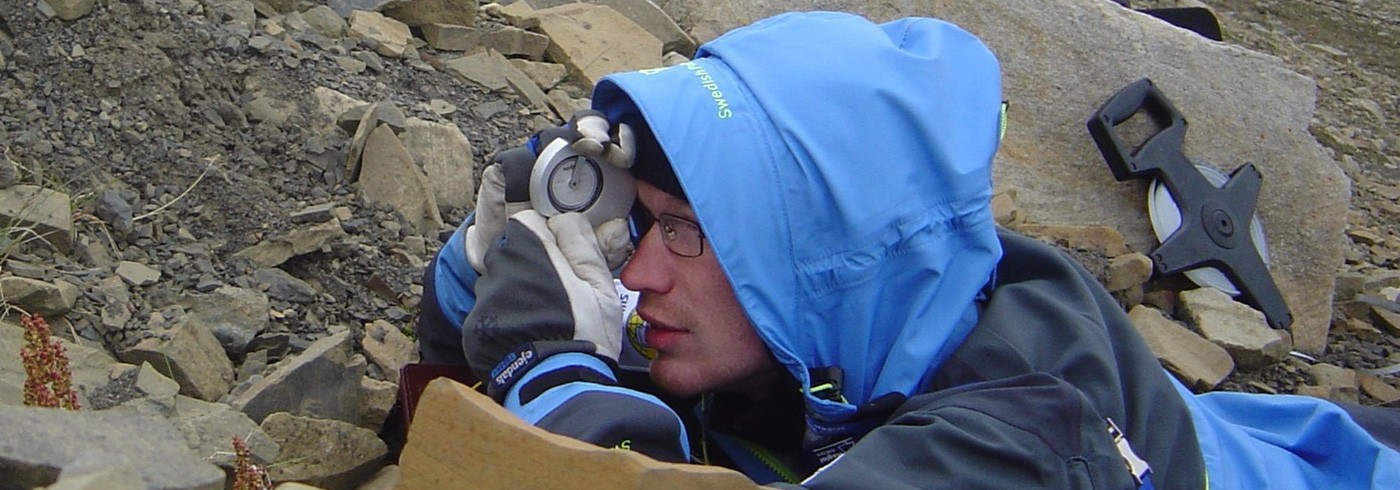Finding Mars on Svalbard: A study of Martian gullies on Earth
14 July 2008 - 4 August 2008
Slope angle measurements performed by Henrik Johansson and Mats Olvmo (standing). Photo: Team Expedition Svalbard -08
Water is a prerequisite for life as we know it. Without water the present life on Earth would not exist. The quest for liquid water on other celestial bodies beyond Earth has therefore become an imperative in space research. The planet Mars has been known to harbour abundances of frozen water trapped in its polar caps and the regolith. However, due to the low atmospheric pressure and temperature, water cannot exist in a liquid and stable form on the surface.
The discovery of water-related geological features on Mars, known as gullies, constituted a turning point in the debate regarding the existence of liquid water on the Martian surface. The discovery implied that water could exist on the surface of Mars during favourable conditions. However, identifying the exact formation processes that have been involved in the formation of these gullies has proved to be a point of contention. Different models have been proposed, including dry landslides, liquid carbon dioxide, snow melt, melting ground ice, deep aquifers and shallow water aquifers. So far the science community only has access to remote sensing data from satellites, which, at present, cannot for certain determine the true eroding agent of the gullies.
Martian analogue gullies on Earth
On a scouting mission to Svalbard in 2006, we found gullies that bear striking similarities to the Martian ones. These gullies, which originate from two different planets, exhibit the same kind of characteristic features such as consolidated strata layers, alcoves, channels and debris aprons. We therefore hypothesized that the terrestrial gullies in the polar regions could be an equitable analogue for the Martian gullies.
The expedition
Last summer (2007) we deployed data loggers in and around a gully on the mountain massif of Hjortfjellet in Adventfjorden in order to record the temperature and the ground moisture in the active layers of the gully. This summer we retrieved the loggers and made a detailed study of the geomorphology, morphometry and debris characteristics of the gullies. We also flew a high-resolution stereo camera (HRSC-AX) on an airplane over the gully sites to map them. The camera is a copy of the HRSC onboard the European satellite Mars Express, which is currently in orbit around Mars. The terrestrial gully images will be compared to the Martian ones. The knowledge gained from this comparison and from the in situ data measurements will be used to make a qualitative evaluation of the conclusions drawn from previous studies of gully formation on Mars, where only remote sensing data is available. Hopefully this will enhance our understanding of the Martian gullies.


